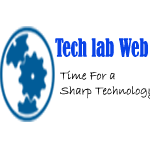In today’s dynamic professional environment, the term “business casual” has evolved to become a standard dress code across various industries. For men, adopting a business casual attire involves striking a balance between formal business wear and casual comfort. This guide will delve into the essentials of business casual attire for men, offering practical tips on how to achieve the perfect blend of professionalism and relaxed style.
Table of Contents
What Is Business Casual?
Business casual is a dress code that combines the professionalism of traditional business attire with the relaxed nature of casual wear. It is designed to create a comfortable yet polished look that is appropriate for a range of workplace settings, from corporate offices to creative industries. The goal of business casual is to project competence and professionalism while allowing for personal expression and comfort.
Key Elements of Business Casual Attire for Men
1. Dress Shirts
A cornerstone of business casual attire is the dress shirt. Opt for well-fitted, long-sleeve shirts in solid colors or subtle patterns. Classic colors such as white, light blue, and gray are versatile choices that can be paired with various trousers and jackets. Avoid overly casual fabrics like denim or bright, flashy patterns.
2. Trousers and Chinos
When selecting trousers for a business casual setting, choose well-tailored options in neutral shades such as navy, gray, or beige. Chinos are a popular choice for their comfort and versatility. They offer a more relaxed look compared to traditional dress pants while maintaining a professional appearance.
3. Blazers and Sport Coats
While not always required, a blazer or sport coat can elevate a business casual outfit. Opt for a well-fitted blazer in classic colors like navy or charcoal. A sport coat in a complementary fabric, such as tweed or wool, can also be a stylish choice. Ensure that the blazer or sport coat is tailored to fit your body shape for a polished look.
4. Sweaters and Cardigans
For cooler weather or a more relaxed appearance, consider adding a sweater or cardigan to your ensemble. Choose simple, well-fitted pieces in neutral or muted colors. A crew-neck sweater over a dress shirt can provide a sophisticated look without compromising comfort.
5. Footwear
Footwear plays a crucial role in completing the business casual look. Leather loafers, brogues, or derby shoes in shades of brown or black are ideal choices. Ensure that your shoes are polished and well-maintained. Avoid sneakers or overly casual footwear, as these can undermine the professionalism of your outfit.
6. Accessories
Accessories in a business casual outfit should be understated and functional. A classic leather belt, a simple watch, and minimalistic cufflinks can enhance your look without overwhelming it. Ties are generally optional in a business casual setting but can be added for a more formal touch if needed.
Common Mistakes to Avoid
1. Overdressing or Underdressing
One common mistake in business casual attire is either overdressing or underdressing. Ensure that your outfit aligns with the expectations of your workplace. If you’re unsure, it’s better to lean towards slightly more formal attire rather than too casual.
2. Neglecting Fit
Fit is crucial in business casual wear. Clothes that are too tight or too loose can detract from a polished appearance. Invest in tailoring to achieve a well-fitted look that enhances your overall presentation.
3. Ignoring Grooming
No matter how well your outfit is chosen, poor grooming can undermine your business casual appearance. Ensure that your hair is neatly styled, facial hair is well-maintained, and nails are clean and trimmed.
Adapting Business Casual to Different Environments
1. Corporate Offices
In a corporate office setting, business casual attire should remain polished and professional. Stick to classic colors and well-fitted garments, and consider adding a blazer or sport coat for important meetings or presentations.
2. Creative Industries
Creative environments often allow for more flexibility in business casual attire. You can experiment with patterns, textures, and more casual pieces while maintaining a professional overall look. Ensure that your choices reflect your personal style while adhering to workplace norms.
3. Client Meetings
When meeting with clients, err on the side of caution by opting for a more polished version of business casual. A blazer or sport coat, paired with a dress shirt and well-fitted trousers, can help you make a positive impression.
Conclusion
Mastering the art of business casual attire for men involves understanding the balance between professionalism and comfort. By focusing on well-fitted garments, classic colors, and appropriate accessories, you can create a business casual look that is both stylish and suitable for various workplace settings. Remember, the key is to project competence and confidence while maintaining a relaxed and approachable appearance.





_3-6.jpg)




